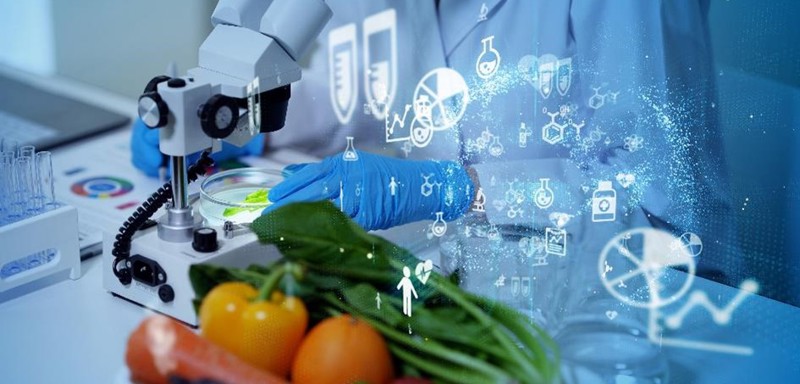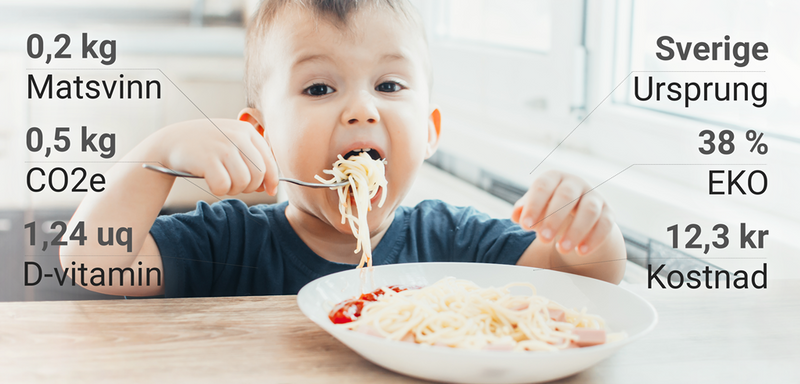What is actually most sustainable?
Meat, vegan, locally produced and organic - what is actually most sustainable from an overall perspective? We enlist the help of three experts to find out what actually applies in three current issues. The food prepared and served in the public sector must not only be tasty, nutritious and varied - it must also be sustainable. And sustainability is not just about climate and carbon emissions, but just as much about biodiversity, use of water, chemicals and antibiotics.

Here's what the research says on three hotly-debated sustainability issues.
Which meat is best from a sustainability perspective?
Beef has long been considered a climate culprit, while chicken has been the more sustainable alternative. But then Swedish chicken was suddenly red-listed in the latest edition of WWF's Meat Guide, then a new study was presented in Nature Food, which shows that beef and pork are more sustainable than chicken.
So, what are we really supposed to believe?
“We previously had a rather simplified picture where we only looked at the climate impact and, in that case, chicken is a better alternative than beef and pork. But if you weigh in more sustainability aspects such as biodiversity, use of pesticides and how much land needs to be used, then chicken is no longer the best option”, says Line Gordon, director of the Stockholm Resilience Center.
She thinks that the cow has been berated unnecessarily. Cows can graze on grass on land that would otherwise not be used for cultivation, while providing fertilizer and benefiting biodiversity.
And pigs can eat low-quality feed that doesn't need to be sprayed with pesticides; they can also be raised on leftovers that would otherwise be disposed of.
Chickens, on the other hand, need high-quality feed in the form of wheat, corn and soya bean meal, which is grown on fine arable land.
Line Gordon explains that circular food systems aim for optimal resource utilisation by prioritising arable land for food production for people. Today, around 40 per cent of the world's arable land is used to produce high-quality feed for animals.
At the same time, she is careful to point out that the big problem is not the kind of meat we eat, but the amounts.
“If we want to produce meat in a sustainable way, we have to reduce the quantities and eat more plant-based food instead”, says Line Gordon.
Is vegetarian always the most sustainable protein?
Vegetarianism is a growing trend where more and more people are choosing to replace meat and other animals with plant-based alternatives.
That is why the WWF has developed the guide to veganism, Vegoguiden, in which different types of green proteins are assessed based on several different aspects of sustainability.
“We are in the middle of a green protein shift and, in this way, we want to help people make the most sustainable choices based on an overall picture”, says Anna Richert, senior food expert at WWF.
Because everything that is vegetarian is not sustainable by definition. It is true that the climate impact is in principle always lower when comparing plant-based and animal-based food, but if you add other sustainability aspects such as the use of water and chemicals and biodiversity, it is not as simple.
Nuts, almonds, rice, coconut and avocado are some examples of crops that are worse from a sustainability perspective.
Soya beans and meat substitutes made from soya are given the green light despite the fact that it is a raw material that is quite questionable due to the destruction of rainforests.
“Soya bean production is not problem-free, but like all legumes it is grown efficiently and produces a large yield per hectare. It is livestock production that drives deforestation in, for example, the Amazon, the soya that goes to the food industry often comes from Europe, Canada and China.
In recent times, the discussion about so-called ultra-processed food has exploded. This includes things like soya nuggets and veggie sausages.
“Our position is that it is better for the climate if legumes are used in a low-processed form and that things like stews and soups are made from beans and lentils. At the same time, you have to be realistic; it is easier to implement a protein shift and eat varied food if you can use convenient transition products sometimes”, says Anna Richert, and adds:
“Then it is the fact that there is a natural place for a certain amount of animals in a sustainable food system. Our intention is not for everyone to become vegan, we just want to see more and better vegetarian food.”
Organic or locally produced - which aspect is more important?
First, it is important to state that there need not be an opposite relationship between organic and locally produced food - but there is also no similarity between them
“Organic is about how a product is produced, while locally produced is about geography. Some think that everything that is produced here in Sweden is local, while for others it means products that come from the small farm, whose products you buy on a Reko ring and with which you may have a personal relationship”, says Rebeca Milestad, researcher and sustainability expert at KTH.
The challenge is that there is no definition of what is actually "local" or "locally produced" and that in the general discussion there is often a confusion of distance and large-scale versus small-scale forms of production. There are also no barcodes or other aids to mark it out technically.
Organic, on the other hand, has a clear definition and there are robust certifications in the form of Krav or EU organic. The control system is transparent and shows exactly what is required and how the organic production takes place.
The environmental benefits are also clear. Organic production means less use of artificial fertilizers and chemical pesticides, which in turn contributes to less eutrophication and increased biodiversity. In addition, higher demands are placed on ethics and good animal husbandry.
However, it cannot be said that a food that is "Swedish" or "locally produced" is better for the climate or for the environment in general.
“Many people think that transport is very harmful to the environment, but 50-80 per cent of a food's total environmental impact occurs on the farm. Therefore, it is always the production system itself that is the most important”, says Rebeca Milestad.
If, on the other hand, you want to shop locally for other reasons – such as to support Swedish farmers or think about food security – then absolutely.
“But then you have to be aware that it is not about the environment but about something else.”

Foodtech creates new opportunities
Food is so much more than what is on the plate. “Public sector meals are a strategic tool with which you can achieve almost anything”, sa...

Sustainability
Climate-smart food is not more expensive
From the Swedish Food Agency's survey “Hur ser beslutsfattare på den offentliga måltiden?” (How do decision-makers view the public sector...

Foodtech
Food and data go hand in hand
Food is vital to humanity, but food is also data. Society places increasingly high demands on what we eat, how the food ends up on the pl...